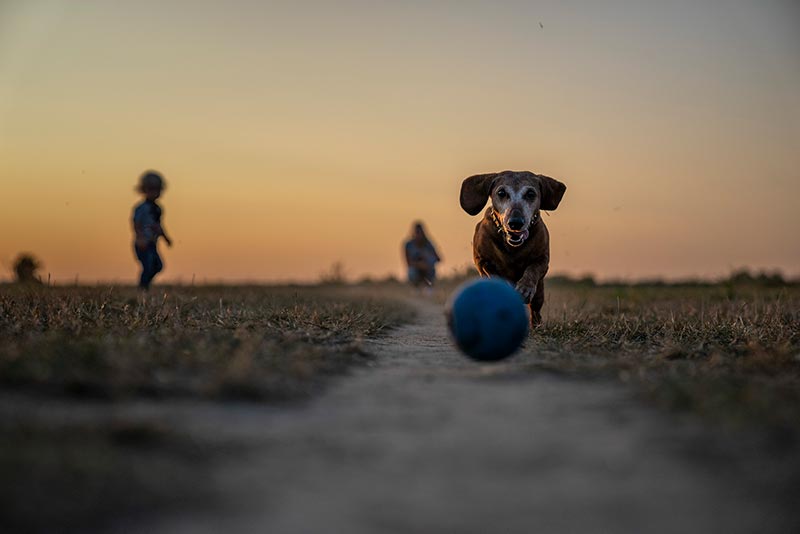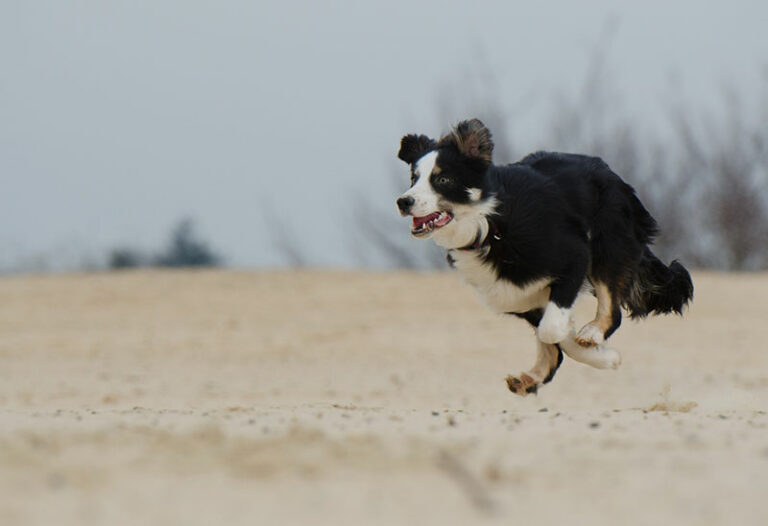How Long Should Dogs Be Outside In Hot Weather?
The hot weather can be ideal for walks around the block or in a park and some beach time with your dog. While the heat doesn’t impact us as humans much, your dogs won’t feel the same way.
So, how long should dogs be outside in hot weather? It relies on many factors, including the breed, size, and even your dog’s age. If your dog is one of the short-snouted and long-haired breeds, staying out in hot weather should be kept to a minimum since they feel the heat a lot more than the others. But, if not, you may be able to spend a little more time outside with your pet.
How Long Should Dogs Be Outside In Hot Weather?
Compared to humans, a dog’s body temperature ranges from 101 to 102.5 degrees F, with a maximum temperature that is considered to be acceptable being around 103 degrees F.
Because of this, dogs’ body temperatures tend to rise quickly, so your dog probably does even if you don’t feel warm.
It is also essential to be aware that when dogs are left outside for an extended period, they can suffer from heat stroke due to an abnormal rise in their body temperature.
Excessive sweating or drooling, fatigue, confusion, a lack of balance, and changes in tongue color are a few signs of heatstroke. And when a dog’s body temperature rises to about 107° F, several organs start to fail, making the condition fatal.
So, how long should dogs can be outside in hot weather? The thermoneutral zone (TNZ), which is the typical range of temperatures at which animals can retain their body temperatures without using much energy beyond their usual metabolic rate, is one of the most key determinants to take into account while addressing this question.
This range for dogs is between 68 degrees F and 86 degrees F, so keep this in mind while taking your dog outside during hot weather to avoid heat strokes.
Yes, we also get heat strokes, but since dogs do not sweat as much as people do, their situation may worsen because dogs only have their paws and noses to control their body temperature.
How long should dogs be outside in hot weather if you are walking them? Any temperature beyond 77 degrees F is thought to be highly harmful when walking outside for an extended period since your dog could suffer from heatstroke. It is only acceptable for it to be 68 degrees F.
How long should dogs be outside in hot weather when considering the breed and the size of your dog? Larger thick-coated dogs will like cold weather, but they might struggle when it is too hot.
So, you should not keep thick-coated dogs outside in temperatures above 90 degrees F for a long time.
However, smaller dogs with thin hair may be able to spend a little longer outside than the larger breeds. But this is different for breeds used for protecting cattle, which are typically medium in size and can tolerate hot weather when the temperature is between 60 and 90 degrees F.
How long should dogs be outside in hot weather if they are puppies? Puppies under six months of age and toy breeds are often protected from too much heat since they have a more difficult time regulating their body temperatures than adult dogs.
Therefore, if you have a small puppy, give him extra attention by providing a moist cloth to lay down on, playing with water, and so on.
Is 90 Degrees Too Hot For A Dog To Be Outside?
Even though 90 degrees is the maximum temperature for dogs to be outside, not all dog breeds can tolerate this.
Here are a few things to consider when deciding if 90 degrees is too hot for a dog to be outside.
- The dog’s breed
Smaller dog breeds can endure the heat for more extended periods. Boxers, pugs, and bulldogs are brachycephalic (short-snouted) breeds that struggle in hot temperatures because they can’t fully cool off through panting.
- The dog’s age
Puppies under six months of age shouldn’t be exposed to temperatures above 90 degrees F, as was previously said because their organ systems are still developing.
It will be difficult for them to pant at such high temperatures. How long should dogs be outside in hot weather if they are old? If you have an older dog, they may have health issues that prevent their bodies from working correctly.
Therefore, it’s vital to keep older dogs inside during hot weather and keep them cool and hydrated.
- Humidity in the environment
Your dog may become overheated even in moderate temperatures if there is a rise in the humidity levels.
By giving him cool baths, keeping him hydrated, and allowing him to be in an area with fresh, cool air, you can try to make your dog comfier.
No matter your dog’s breed or size, do not leave them outside for longer than 10 or 20 minutes if the temperature is over 90 degrees.
And if you see any of the mentioned symptoms of heat stroke, take your dog to the veterinarian right away.
Now you know how long dogs should be outside in hot weather and that it usually depends on the breed, size, age of the dog, and even other factors like the environmental humidity and your dog’s body fat.
So make sure your dog has access to clean, cool water at all times. If you can’t provide your dog with a cool area to sleep in, make sure to make them lie down on a moist cloth during hot weather.
In hot weather, you should also take extra precautions for brachycephalic breeds, older dogs, and even young puppies. If you’re going to be outside with your dog in hot weather, go early in the morning or late in the evening when the cool breezes are blowing.
Another thing to remember is the symptoms of heat stroke; if you notice them, call your veterinarian immediately.
We hope this post helps you understand the difficulties your dog may face in hot weather and that you find it useful in making your dog more comfortable when it is too hot outside.
Thank you for reading this post. Stay tuned with Jack Russell Owner for more interesting posts about your pet friend.








